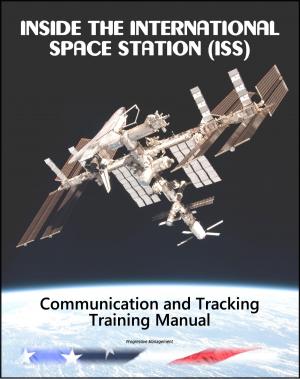Nanoscience and Nanotechnology: Signature Initiatives on Knowledge Infrastructure, Sensors, Nanoelectronics, Nanomanufacturing, Solar Energy Collection, Federal Research Strategy
Nonfiction, Science & Nature, Technology, Nanotechnology| Author: | Progressive Management | ISBN: | 9781301287338 |
| Publisher: | Progressive Management | Publication: | May 29, 2013 |
| Imprint: | Smashwords Edition | Language: | English |
| Author: | Progressive Management |
| ISBN: | 9781301287338 |
| Publisher: | Progressive Management |
| Publication: | May 29, 2013 |
| Imprint: | Smashwords Edition |
| Language: | English |
America's ongoing research program into nanotechnology involves many areas of study, some of which have been designated as signature initiatives: knowledge infrastructure, sensors, nanoelectronics, nanomanufacturing, solar energy collection. Official reports from the National Nanotechnology Initiative provide vital information about these important research topics which could revolutionize our world.
Nanotechnology solves global challenges by generating and applying new multidisciplinary knowledge of nanoscale phenomena and engineered nanoscale materials, structures, and products. The data underlying this new knowledge are vast, disconnected, and challenging to integrate into the broad scientific body of knowledge. The Federal agencies participating in the National Nanotechnology Initiative (NNI)—in conjunction with the broader nanoscale science, engineering, and technology communities—have identified the building of a formal knowledge infrastructure as critical to sustainable progress in nanotechnology. Nanoinformatics is the science and practice of developing and implementing effective mechanisms for the nanotechnology community to collect, validate, store, share, mine, analyze, model, and apply nanotechnology information. Nanoinformatics is integrated throughout the entire nanotechnology landscape, impacting all aspects of research, development, and application. An improved nanoinformatics infrastructure will ensure the sustainability of our national nanotechnology proficiency by improving the reproducibility and distribution of experimental data as well as by promoting the development and validation of tools and models to transform data into information and applications.
Nanotechnology-enabled sensors (nanosensors) are providing new solutions in physical, chemical, and biological sensing that enable increased detection sensitivity, specificity, and multiplexing* capability in portable devices for a wide variety of health, safety, and environmental assessments.
The semiconductor industry is a major driver of the modern economy and has accounted for a large proportion of the productivity gains that have characterized the global economy since the 1990s. Continuing to shrink device dimensions is important in order to further increase processing speed, reduce device switching energy, increase system functionality, and reduce manufacturing cost per bit. But as the dimensions of critical elements of devices approach atomic size, quantum tunneling and other quantum effects degrade and ultimately prohibit conventional device operation. Researchers are therefore pursuing somewhat radical approaches to overcome these fundamental physics limitations. Candidate approaches include different types of logic using cellular automata or quantum entanglement and superposition; 3-D spatial architectures; and information-carrying variables other than electron charge such as photon polarization, electron spin, and position and states of atoms and molecules.
A decade of research under the National Nanotechnology Initiative has led to remarkable discoveries of nanoscale materials with unique properties, laboratory demonstrations of a range of innovative nanoscale devices, and introduction of a limited number of nanotechnology-based products.
Nanotechnology can help overcome current performance barriers and substantially improve the collection and conversion of solar energy. At the nanoscale, a number of physical phenomena have been identified that can improve the collection and conversion of solar energy. Nanoparticles and nanostructures have been shown to enhance the absorption of light, increase the conversion of light to electricity, and provide better thermal storage and transport.
America's ongoing research program into nanotechnology involves many areas of study, some of which have been designated as signature initiatives: knowledge infrastructure, sensors, nanoelectronics, nanomanufacturing, solar energy collection. Official reports from the National Nanotechnology Initiative provide vital information about these important research topics which could revolutionize our world.
Nanotechnology solves global challenges by generating and applying new multidisciplinary knowledge of nanoscale phenomena and engineered nanoscale materials, structures, and products. The data underlying this new knowledge are vast, disconnected, and challenging to integrate into the broad scientific body of knowledge. The Federal agencies participating in the National Nanotechnology Initiative (NNI)—in conjunction with the broader nanoscale science, engineering, and technology communities—have identified the building of a formal knowledge infrastructure as critical to sustainable progress in nanotechnology. Nanoinformatics is the science and practice of developing and implementing effective mechanisms for the nanotechnology community to collect, validate, store, share, mine, analyze, model, and apply nanotechnology information. Nanoinformatics is integrated throughout the entire nanotechnology landscape, impacting all aspects of research, development, and application. An improved nanoinformatics infrastructure will ensure the sustainability of our national nanotechnology proficiency by improving the reproducibility and distribution of experimental data as well as by promoting the development and validation of tools and models to transform data into information and applications.
Nanotechnology-enabled sensors (nanosensors) are providing new solutions in physical, chemical, and biological sensing that enable increased detection sensitivity, specificity, and multiplexing* capability in portable devices for a wide variety of health, safety, and environmental assessments.
The semiconductor industry is a major driver of the modern economy and has accounted for a large proportion of the productivity gains that have characterized the global economy since the 1990s. Continuing to shrink device dimensions is important in order to further increase processing speed, reduce device switching energy, increase system functionality, and reduce manufacturing cost per bit. But as the dimensions of critical elements of devices approach atomic size, quantum tunneling and other quantum effects degrade and ultimately prohibit conventional device operation. Researchers are therefore pursuing somewhat radical approaches to overcome these fundamental physics limitations. Candidate approaches include different types of logic using cellular automata or quantum entanglement and superposition; 3-D spatial architectures; and information-carrying variables other than electron charge such as photon polarization, electron spin, and position and states of atoms and molecules.
A decade of research under the National Nanotechnology Initiative has led to remarkable discoveries of nanoscale materials with unique properties, laboratory demonstrations of a range of innovative nanoscale devices, and introduction of a limited number of nanotechnology-based products.
Nanotechnology can help overcome current performance barriers and substantially improve the collection and conversion of solar energy. At the nanoscale, a number of physical phenomena have been identified that can improve the collection and conversion of solar energy. Nanoparticles and nanostructures have been shown to enhance the absorption of light, increase the conversion of light to electricity, and provide better thermal storage and transport.















